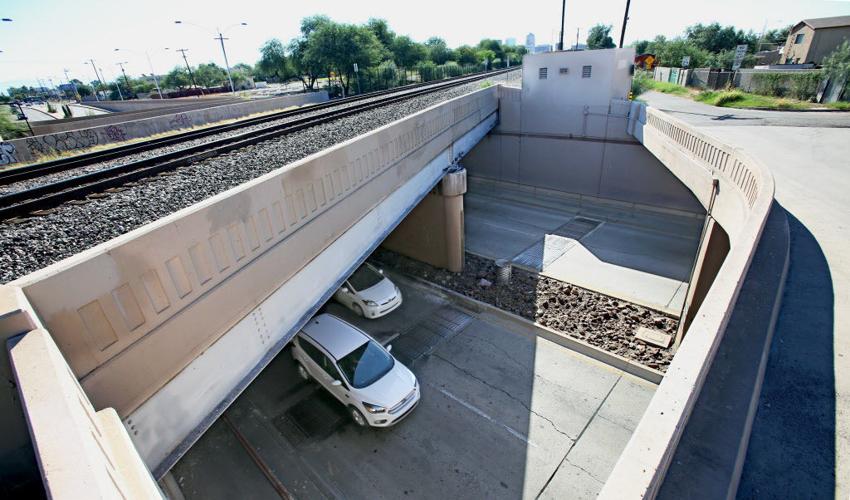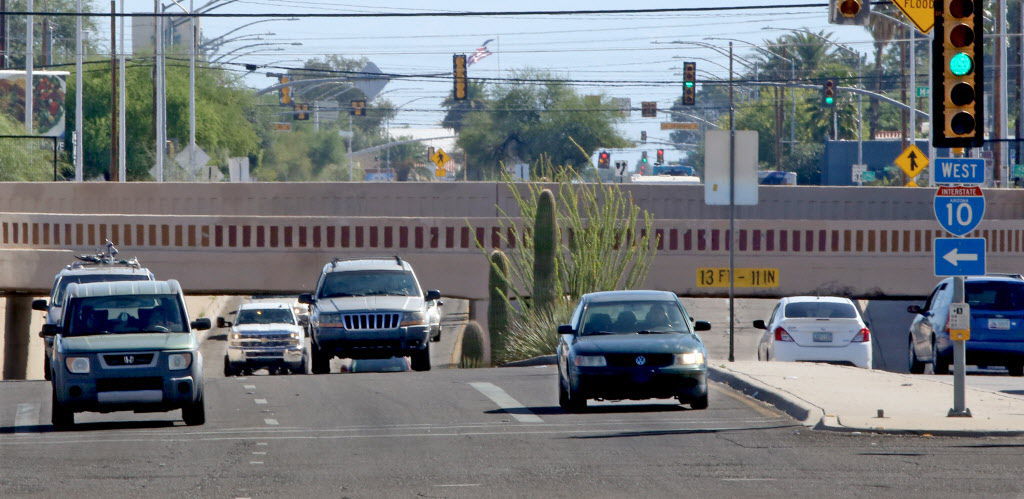It’s not quite a free lunch, but it’s as close to it as you’ll get in the world of transportation finance: $10.5 million toward the Ina Road interchange project for just $1.2 million.
Here’s the wonky, but fairly interesting story of how that windfall fell into the laps of local transportation officials, and will end up easing financial pressures on the Regional Transportation Authority.
Before being essentially banned in 2011, Congressional earmarks were how a number of transportation projects got funded. A decade ago, earmarks — or “congressionally directed spending” — accounted for a little more than 13 percent of the Department of Transportation’s budget; locally those funds have gone into work on Houghton Road, Campbell Avenue, and others, according to two local transportation officials.
The same year that controversy erupted around the infamous $223-million Alaskan Bridge to Nowhere, which helped speed along the demise of earmarks, Congress also set aside $10.6 million in 2005 for what were vaguely described as “railroad grade separations” on Sixth Street and 22nd Street and a reconstruction of the “Speedway Blvd. Underpass in Tucson.”
“That kind of leaves a lot to be desired,” said Andy McGovern, now the city’s traffic engineering administrator and in those days a roadway design manager. “There’s not a lot to be done with $10 million at three locations.”
With about $1 million of the money, the city conducted a project assessment on a potential widening of Speedway under the railroad bridge near Interstate 10, McGovern said. What that assessment revealed, to the surprise of few, was that the project would be exorbitantly expensive and, given several other nearby projects, ultimately unneeded.
That gets at one of the major criticisms of earmarks: representatives throwing money at projects from distant Washington D.C. sometimes missed the mark.
“When planning is initiated at the local level, I think local planners have a much better feel for what is possible or feasible,” Pima Association of Government’s Nathan Barrett told the Road Runner. “Normally it won’t get very far along when projects are initiated by the local jurisdiction.”
Because earmarks can only be used on designated projects, the remaining $9.4 million for Speedway spent the next decade trapped in no man’s land, unused and out of the reach of cash-strapped regional transportation planners.
And that $9.4 million was hardly alone. An estimated $2 billion was similarly locked up in transportation projects that weren’t going anywhere across the country, according to a February story in Roll Call. To remedy that problem, Congress approved legislation late last year that freed up funds trapped in dead earmarks — defined as any project more than 10 years old and on which 10 percent or less of designated funds had been spent.
Barrett and others were certain that there would be at least one in the area, and they were almost right. Unfortunately for them, the city had spent 11.9 percent of the Speedway funds, barely exceeding the threshold.
But after some negotiation by the Arizona Department of Transportation, the Federal Highway Administration offered up a solution for the region’s sole dead earmark: pay back what was spent on Speedway in exchange for the original earmarked amount, which could then be spent on a roadway project within 50 miles, in this case the Ina interchange. An unspent $1 million for the Veterans Memorial Overpass, another earmarked project finished more than a decade ago, will also be redirected to that project. Together, the two pools of previously untapped cash will offset part of RTA’s financial commitment to the Ina interchanged.
The Pima Association of Governments approved the $1.2 million reimbursement payment to the feds at a recent board meeting.
“It’s a win for the RTA, it’s a win for the City of Tucson, a win for the region as a whole, and a win for ADOT,” Barrett said.
Those freed up millions are especially welcome news for the RTA, which oversees the sales tax-funded and voter-approved $2.1 billion transportation plan, because tax collection has been “anemic” in recent months, according to recent meeting materials.
Down the road
The city’s got more crack and fog sealing work planned. Between Oct. 10 and Oct. 20, crews will be working overnight from 6 p.m. to 6 a.m. on Broadway between Wilmot Road and Pantano Road. At least one lane in both directions will be open through the work, which is intended to extend the life of roadways.
Work is also set to begin Thursday on the new intersection between Kolb Road and Sabino Canyon Road. Crews will be working around the clock until early December. During the 6 a.m. to 8 p.m. day shift, at least two lanes of travel will be open on Kolb and at least one will be open during the 8 p.m. to 6 a.m. evening shift.
Once the project is completed in February 2017, there will be a four-lane connection between Sabino Canyon and Kolb just north of Speedway.





